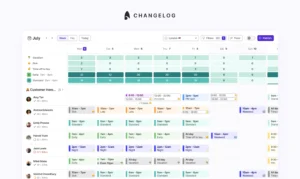
How to measure customer satisfaction in a contact centre

Customer support teams exist to make customers happy. This means you need a metric in place to see how well your team is doing in that respect. With a whole set of tools and software that give you over 100 different metrics to assess how your team is performing, how do you cut through the noise and use the most important metrics?
This depends on what you want to measure and the time scale you want to measure.
What customer feedback metric is right for you?
CSAT (customer satisfaction), NPS (net promoter score) and CES (customer effort score) are all useful ways of receiving feedback from your customer.
You may decide to use all three, or you may decide your customer support team just needs one. This depends on how holistically you want to measure the impact your brand has on your customer beyond a specific interaction, and whether you want an idea of the long term perception a customer has of your brand or transaction specific feedback.
NPS (Net Promoter Score)
NPS was popularised by Bain & Company in 2003 to measure how well an organisation generates relationships worthy of loyalty. It is used beyond customer service teams and was widely adopted by organisations such as Apple, Intuit, G.E. and American Express. Product, marketing and sales teams also use NPS to assess how what they are building and saying is received.
An NPS survey asks a customer how likely they are to recommend your product or service. It extends beyond the nature of one interaction or purchase but reflects feedback on your brand as a whole. You can make this more reflective of a customer service interaction by iterating on the language, such as adding “How likely are you to recommend [your brand] based on your most recent experience”. The scale is between 1-10.
NPS calculations are expressed as a range between -100 and 100. Respondents are categorised into three buckets: promoters (responses of 9 or 10), passives (responses of 7 or 8) and detractors (responses 6 or lower). NPS is calculated by subtracting the total promoters from detractors.
CSAT (Customer Satisfaction)
Compared to NPS, CSAT measures feedback on a specific interaction. Questions are usually phrased as “On a scale from 1 to 5, how satisfied were you with [brand/interaction]?”. CSAT ratings are often visualised with emojis or smiley faces. When you pass security at an airport, you are usually faced with a CSAT measurement with smiley buttons relating to your experience going through airport security.
The transactional nature depends on how frequently or when you send the CSAT survey. These can be sent immediately after an interaction, or you can send them monthly, bimonthly, or annually. The less frequently you send a CSAT survey, the less related to a specific interaction they will be.
CES (Customer Effort Score)
Customer effort score measures how much work a customer had to put in to have their issue resolved. In order to align high scores to positive objectives, the question is usually phrased as “How easy did [brand] make it for you to solve your issue?”. A frequent example of a low CES is when a customer gets passed around to numerous agents having to repeat their issue each time.
CES is calculated as the % of respondents who score 4 or 5 (strongly agree).
CES is the metric most tied to the nature of a specific transaction and the surveying is usually done immediately after the interaction.
Long term vs. short term
The best way of thinking which metric you want to use depends on the time horizon you are looking to measure. NPS is often regarded as the metric with the highest longevity, in that it covers how a customer has felt about your brand overtime. It often encompasses various functions such as marketing, sales, product, customer support and customer success. Anything a customer sees or feels will go into their NPS score.
On the contrary, customer effort score (CES) is intended to measure a very specific interaction a customer had. Customer effort score is most commonly used in customer experience teams, but can also be relevant in customer success in measuring how easy onboarding was.
CSAT falls in between NPS and CES. The time period CSAT is used for depends heavily on the question asked and can be tailored for the objective your company is trying to achieve. When phrased in relation to the most recent interaction or experience, it can be designed to measure a specific agent.
What about Agent Effort Score?
Agent effort score is another metric used, although responded to by your agents rather than customers. This reflects the amount of work an agent needs to put in to solve a specific issue. Unlike customer effort score, the higher the agent effort score, the more difficulty they face in helping your customers.
A high agent effort score presents opportunities ripe for automation. Agent effort scores are often high when there are a number of time consuming tasks an agent has to complete to get to the root cause of the issue. By automating some of these manual tasks, you can bring down your agent effort score, unlocking greater efficiency and a more productive team.
Stay ahead of the game with insights and tips on maximising your customer support team by signing up to the Surfboard newsletter.



